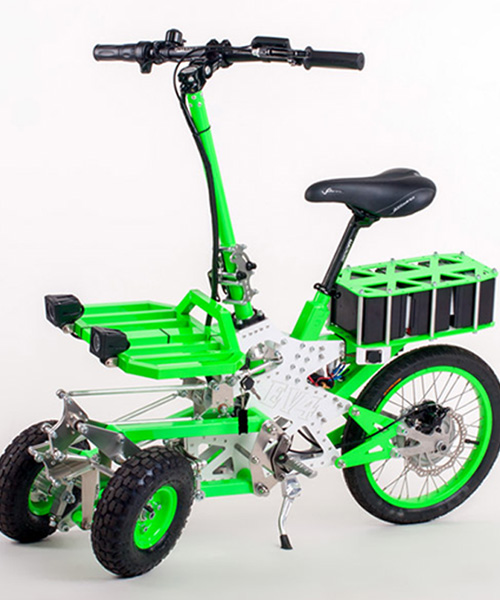


Also the classification of e-bikes is complicated as much of the definition is due to legal reasons of what constitutes a bicycle and what constitutes a moped or motorcycle. Į-bikes are classed according to the power that their electric motor can deliver and the control system, i.e., when and how the power from the motor is applied. A typical unit requires 8 hours to charge the battery, which provides the range of 25 to 30 miles (40 to 48 km), at the speed of around 20 km/h.
#EV MINI BIKE KIT SERIES#
In an (electronic) series hybrid cycle, human power is converted into electricity and is fed directly into the motor and mostly additional electricity is supplied from a battery.īy 2007 e-bikes were thought to make up 10 to 20 percent of all two-wheeled vehicles on the streets of many major Chinese cities. Libbey, human and motor inputs are mechanically coupled either in the bottom bracket, the rear wheel, or the front wheel, whereas in a (mechanical) series hybrid cycle, the human and motor inputs are coupled through differential gearing. In a parallel hybrid motorized bicycle, such as the aforementioned 1897 invention by Hosea W. The terms "electric motorbike" or "e-motorbike" refer to more powerful models that attain up to 80 km/h (50 mph). Performance varies however, in general there is an increase in range and speed with the latter battery types.īy 2001 the terms e-bike, power bike, " pedelec", pedal-assisted, and power-assisted bicycle were commonly used to refer to e-bikes. Some of the less expensive e-bikes used bulky lead acid batteries, whereas newer models generally used NiMH, NiCd, and/or Li-ion batteries, which offered lighter, denser capacity batteries.

By contrast, according to Gartner, in 1995 regular bicycle production decreased from its peak 107 million units.Īmerican car icon, Lee Iacocca founded EV Global motors in 1997, a company that produced an electric bicycle model named E-bike SX and it was one of the early efforts to popularize e-bikes in the United States. Production grew from 1993 to 2004 by an estimated 35%. Yamaha, a Japanese automotive giant built one of the early prototypes of e-bike back in 1989 and invented the pedal assist system in 1993. Despite the Zike, in 1992 hardly any commercial e-bikes were available. The bicycle included NiCd batteries that were built into a frame member and included an 850 g permanent-magnet motor. In 1992 Vector Services Limited offered and sold an e-bike dubbed Zike. For example, Takada Yutky of Japan filed a patent in 1997 for such a device. Torque sensors and power controls were developed in the late 1990s. Wood's device used 4 fractional horsepower motors connected through a series of gears. Schnepf's invention was later re-examined and expanded in 1969 by G.A. Patent 627,066 by John Schnepf depicted a rear-wheel friction “roller-wheel” style drive electric bicycle. Ī bike equipped with an after market electric hub motor conversion kit, with the battery pack placed on the rear carrier rackīy 1898 a rear-wheel drive electric bicycle, which used a driving belt along the outside edge of the wheel, was patented by Mathew J. E-bikes can also be defined separately and treated under distinct electric bicycle laws.Į-bikes are the electric motor-powered versions of motorized bicycles, which have been in use since the late 19th century. This exempts them from the more stringent laws regarding the certification and operation of more powerful two-wheelers which are often classed as electric motorcycles. ĭepending on local laws, many e-bikes (e.g., pedelecs) are legally classified as bicycles rather than mopeds or motorcycles. In some markets, such as Germany as of 2013, they are gaining in popularity and taking some market share away from conventional bicycles, while in others, such as China as of 2010, they are replacing fossil fuel-powered mopeds and small motorcycles. High-powered varieties can often travel more than 45 km/h (28 mph). Both retain the ability to be pedaled by the rider and are therefore not electric motorcycles.Į-bikes use rechargeable batteries and typically travel up to 25 to 32 km/h (16 to 20 mph). pedelecs) and bikes that add a throttle, integrating moped-style functionality. Many kinds of e-bikes are available worldwide, but they generally fall into two broad categories: bikes that assist the rider's pedal-power (i.e. An electric bicycle, also known as an e-bike or ebike, is a bicycle with an integrated electric motor used to assist propulsion.


 0 kommentar(er)
0 kommentar(er)
